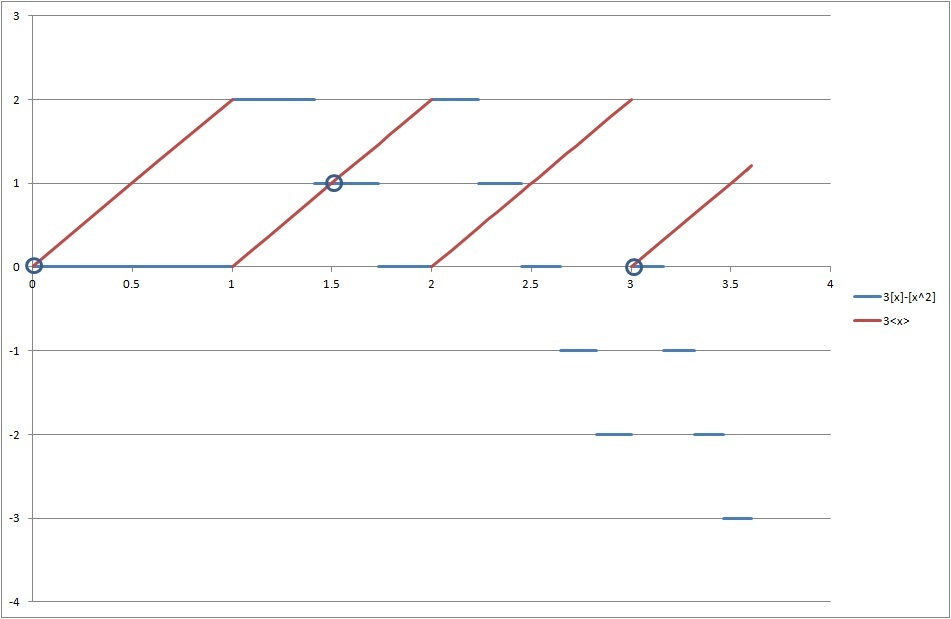A disjointed graph
The sum of the real solutions of the equation 2 ⟨ x ⟩ = 3 [ x ] − [ x 2 ] is?
Note: ⟨ x ⟩ denotes the fractional part of x and [ x ] denotes the greatest integer less than or equal to x .
The answer is 4.50.
This section requires Javascript.
You are seeing this because something didn't load right. We suggest you, (a) try
refreshing the page, (b) enabling javascript if it is disabled on your browser and,
finally, (c)
loading the
non-javascript version of this page
. We're sorry about the hassle.
2 solutions
Did exact same .little overrated prob, don't u think?
2 ⟨ x ⟩ = 3 [ x ] − [ x 2 ] ⇒ ⟨ x ⟩ = 2 3 [ x ] − [ x 2 ] ⇒ 0 ≤ 2 3 [ x ] − [ x 2 ] < 1 .
If x < 0 ⇒ 2 3 [ x ] − [ x 2 ] < 0 = ⟨ x ⟩ ⇒ x ≥ 0 .
From 2 3 [ x ] − [ x 2 ] ≥ 0 ⇒ 3 [ x ] − [ x 2 ] ≥ 0 ⇒ 3 [ x ] ≥ [ x 2 ] ⇒ x < 1 0 ⇒ 0 ≤ x < 1 0
The surest way to solve the problem is to plot out the graph, as I did with a spreadsheet.

It can be seen there are three solutions:
⎩ ⎪ ⎨ ⎪ ⎧ x = 0 x = 1 . 5 x = 3 ⇒ 2 ⟨ 0 ⟩ = 3 [ 0 ] − [ 0 2 ] ⇒ 2 ⟨ 1 . 5 ⟩ = 3 [ 1 . 5 ] − [ 1 . 5 2 ] ⇒ 2 ⟨ 3 ⟩ = 3 [ 3 ] − [ 3 2 ] ⇒ 0 ≡ 0 − 0 ⇒ 1 ≡ 3 − 2 ⇒ 0 ≡ 9 − 9
Therefore the sum of roots are 0 + 1 . 5 + 3 = 4 . 5
don't you think that graphing using spreadsheets would be called cheating?
No offence intended
Log in to reply
Yes, it is cheating. I only post it when I can't get other better solution.
R.H.S. is integer hence fractional part can be either 0 or 05. In the first case x = 3 and in the second case x = 1.5 ( x = 0 is also a solution.)